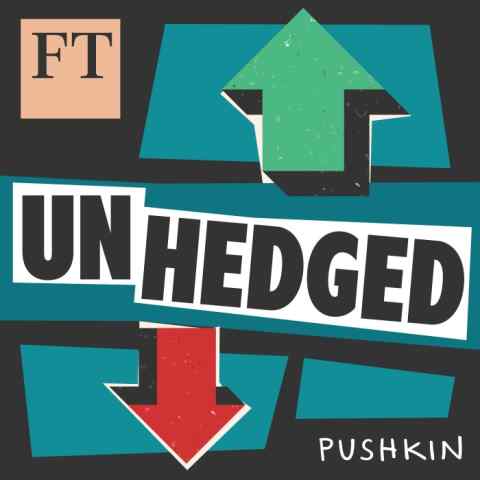News
What crypto (still) gets wrong
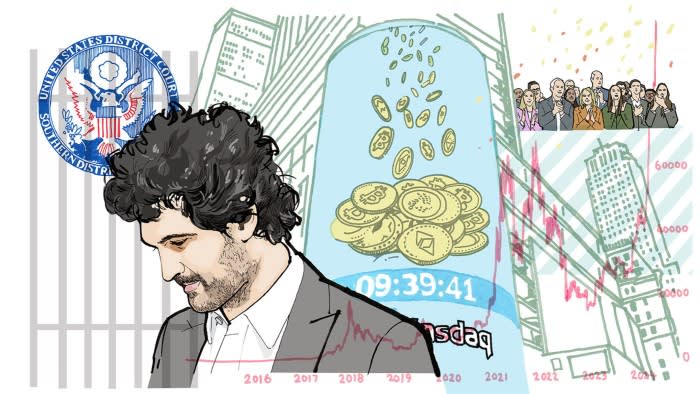
Jay Gatsby, Albert Einstein, Frodo Baggins, John Pierpont Morgan, Michael Jordan, Bill Gates, Elon Musk, Mark Zuckerberg, Warren Buffett, Michael Milken, Bernard Madoff, Charles Ponzi — the list of people to whom Sam Bankman-Fried has been compared is an extraordinary one.
He seems destined to be remembered alongside those last three names, after being convicted of what prosecutors called “one of the largest financial frauds in American history”. The Californian, who has just turned 32, is set to be sentenced this month on charges that could see him spend decades behind bars.
But what is our verdict on crypto? Have we learnt the lessons from the disastrous 2022 crash in digital assets? To judge from recent action in the crypto market, the answer appears to be no.
Since hitting bottom after FTX collapsed into bankruptcy with a $9bn-ish hole in its balance sheet in November 2022, crypto market values have roughly tripled. Bitcoin’s price rose above $70,000 this week to touch record highs. A new wave of enthusiasm is growing, with institutions such as BlackRock and Invesco moving into the market.
Oddly, both critics and defenders of digital assets have often tried to frame the Bankman-Fried case as if it had nothing more to do with the fundamentals of crypto than if he and his cronies had committed fraud through telemarketing or selling shoddy double glazing.
For fear of confusing the jury, prosecutors at Bankman-Fried’s US fraud trial, which I covered for the FT, argued that the embezzlement of customer money from his FTX cryptocurrency exchange to his private trading firm Alameda was “stealing, plain and simple”.
Meanwhile, crypto investor and former Trump aide Anthony Scaramucci, who admits to being taken in by Bankman-Fried, argues that the case has purged crypto’s demons. “What he did was absolutely cataclysmic, and it was tragic. But here’s the great news about what he did. It’s behind us . . . We flushed out a lot of excess in the system, and leverage, and a lot of chicanery,” he said in an interview with the crypto group Circle late last year.
“And we’re now in the aftermath of that . . . all of a sudden we’re mainstreaming the ideas around digital property and digital assets . . . So there’s always a silver lining somewhere.”
Scaramucci speaks for many who have tried to rebuild the momentum around digital assets. But the disaster at FTX, and the wider calamity in crypto markets, cannot be brushed off as purely the result of criminal behaviour by a small number of people.
Bankman-Fried faces a stiff punishment. We should not let crypto itself off the hook too easily either. The experience of the crypto crash shows four deep-rooted problems that are as relevant today as on the day Bankman-Fried filed for bankruptcy.

1. A new set of middlemen
If you want to try to get your head around crypto, starting with the technology is often a recipe for further confusion. You can spend hours contemplating blockchains, hash rates, consensus mechanisms — and more esoteric subjects like parachain auctions and flash loans — without getting any closer to understanding how crypto works in the real world.
Technical explanations will almost always tell you that crypto’s key attribute is that it is decentralised. It is not. This is problem number one.
The notion of decentralisation has been at the heart of crypto since Satoshi Nakamoto, the pseudonymous creator of bitcoin, launched the modern cryptoverse in their 2008 white paper. The idea was that blockchain technology, which creates an unchangeable record of transactions shared between multiple computers, could supplant intermediaries such as banks, brokers and regulators.
The white paper implies a vision for digital assets that runs something like this. Step One: invent a clever system that allows payments with no middlemen (this is bitcoin). Step Two: popularise bitcoin so that banks and financial institutions become redundant. Step Three: build on top of this innovation to make a whole new economy that is better for everyone.
In reality, crypto got stuck at Step Two. Decentralisation did not catch on because it requires people to take absolute responsibility for their money. We have all read the stories about people who forgot the password to unlock their crypto fortune, or threw away a tiny hard drive back when crypto was worth peanuts, only to find that it is now worth millions. In a decentralised world, there is no mechanism to recover from these human errors.
These days, crypto payments more often flow through stablecoins, tokens designed to be worth $1, rather than bitcoin. A handful of centralised companies, such as Tether and Circle, dominate this sector. A small number of centralised exchanges (of which FTX was once a leading example) have meanwhile cornered the market for trading.
These crypto intermediaries are in reality more centralised, less accountable and less transparent than their analogues in mainstream finance. Consider FTX. You can say what you want about scandals in the banking system over the years, but it has been a long time since a major bank failed because the people in charge simply took all the customers’ deposits and made off with them.
Tether, with a $100bn market capitalisation, is three times bigger than its next rival — effectively serving as crypto’s reserve currency. It fought a years-long battle to avoid telling people where it kept the stockpile of assets that backed its dollar token.
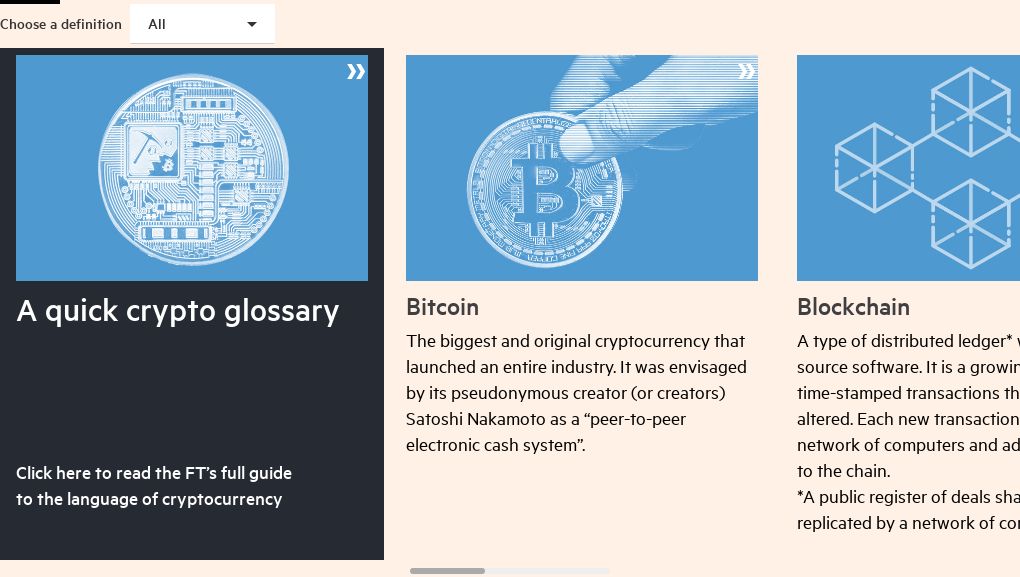
Now, a new set of central institutions are entering the market. It’s never easy to figure out exactly why crypto markets are moving. Crypto is a vibes-based financial market. The lack of fundamental anchors such as earnings or interest rates mean that crypto trades overwhelmingly on sentiment. But the proximate cause of the recent return of “good vibes” to the crypto market appears to be the Securities and Exchange Commission’s decision to allow direct crypto exchange traded funds (ETFs) run by investment institutions to enter the US market.
The irony of this development is remarkable. The bitcoin white paper, crypto’s founding text, says: “The main benefits are lost if a trusted third party is still required.” When you consider that the big positive news in cryptoland today is that BlackRock has opened a bitcoin fund that trades on the Nasdaq, it’s hard to escape the conclusion that the main benefits have been lost.
It is notable that BlackRock-managed funds also backed Bankman-Fried’s FTX with venture capital funding just over a year before it collapsed. It was one of many top Wall Street and Silicon Valley names whose funding helped give FTX its veneer of legitimacy, although the size of these investments was relatively small. For all the talk of crypto’s “decentralised” structure and antagonism with “traditional finance”, it has often been big money managers pushing the gas.
BlackRock’s bitcoin ETF reached $10bn faster than any ETF in US history. Although all such funds benefit from the run-up in crypto prices, they will continue to earn fees as long as retail investors are hanging on for the ride.
The persistence of middlemen in crypto builds on customer demand. People on the whole have enough common sense to know that we are fallible. The very clever tech behind bitcoin was undermined because it didn’t take human nature into account.
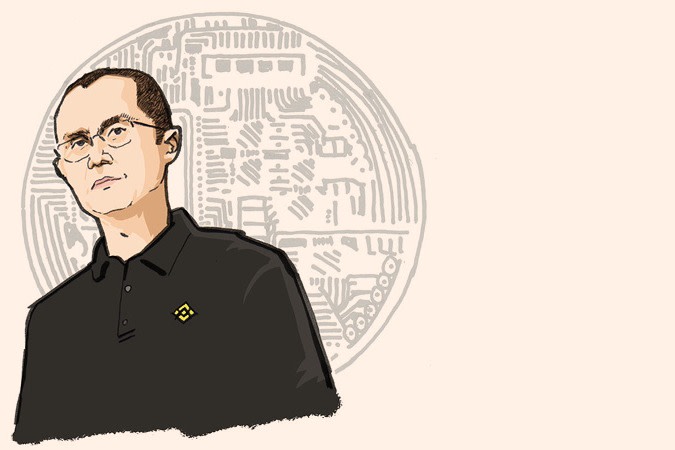 Changpeng Zhao, co-founder of Binance
Changpeng Zhao, co-founder of Binance
2. Problems with authority
Arthur Hayes, the former chief executive of crypto exchange BitMex, once commented: “While bitcoin is supposed to be this libertarian, be-your-own-bank kind of thing, most people are pretty lazy, and are perfectly fine with buying some crypto and holding it on the exchange as if the exchange was a bank.”
Hayes himself is a captivating figure, a polymath entrepreneur whose skills in everything from ballroom dancing to bodybuilding and derivatives trading carried him from a childhood in Buffalo, New York, to Deutsche Bank’s trading floor in Hong Kong, and then to the top of the crypto world. He was in some ways a forerunner to SBF, a dyed-in-the-wool finance guy who brought Wall Street acumen into cryptoland.
Starting in 2016, Hayes pioneered the financial instruments that became the most traded in crypto — which are actually hyper-leveraged derivatives contracts based on crypto prices, not the crypto tokens themselves. But he lost control of his company, BitMex, and was forced to plead guilty in the US in a 2020 case that centred around failure to respect US jurisdiction and money-laundering rules.
Even with the example of Hayes hanging over them, crypto companies’ persistent battle with national authorities points to their second fundamental failing. Crypto still often wants to be above the law.
This impulse goes back to the invention of bitcoin in reaction to the failure of banks and regulators in the global financial crisis. But the result has been a complete perversion of the initial vision.
We are invited to replace financial intermediaries such as banks — which are overseen by broadly competent, democratically accountable regulators — with a crypto-financial system that allows a sleep-deprived 28-year-old like Bankman-Fried untrammelled power over a $40bn financial institution. I think it’s very hard to argue this is a good idea.
The only person with real power over FTX was Bankman-Fried. This was partly because his venture capital investors didn’t insist on proper governance. But it was also because he could base the international exchange in the Bahamas and beam his services into countries around the world from offshore.
In the face of offshore entities such as FTX, UK regulators struggled to enforce a ban on crypto derivatives trading brought in to protect amateur investors in 2021. Even the US has not been able to stop its citizens from reaching offshore venues.
The ultimate example of this phenomenon is not actually Bankman-Fried, but his nemesis. Changpeng “CZ” Zhao, founder of Binance, still the largest crypto exchange, made an eleventh-hour offer to buy FTX as it spiralled towards bankruptcy, but then pulled out — dooming Bankman-Fried. Zhao described his company in its early years as a “pirate ship”.
Binance has long refused to name its headquarters, and for years even tried to shroud the location of its main offices. By refusing to make landfall in any country, it was able to drift away from regulatory pressure in one jurisdiction and appear in another. Its local subsidiaries might take the heat, but the main moneymaking engine, its online crypto exchange Binance.com, stayed safely in international waters.
A senior Binance executive once explained the logic bluntly: “We do not want [Binance].com to be regulated ever.” The company claims it has since changed course. Zhao last autumn pleaded guilty to US charges. He could face jail time even after Binance agreed to pay $4.3bn to settle its differences with the Feds.
You could argue that recent developments such as the US ETF launches suggest crypto as it matures is getting over its problems with authority. Crypto is indeed inching towards more regulation. But simply putting an asset such as bitcoin into a regulated vehicle like an ETF doesn’t change the wild west nature of the market that determines crypto prices, which is still fraught with potential for manipulation and abuse.

3. No limits
Crypto promises to “democratise” finance. It takes the power to create new, easily tradable assets out of the hands of a few institutions and gives it to everybody. A helpful parallel is how Twitter and other social media platforms smashed the monopoly of mass publishing. What the internet did to newspapers and broadcasters, crypto promises to do to finance.
Here we need to distinguish between bitcoin and the thousands of other crypto coins out there. The total number of bitcoins is limited by design to 21mn. But for many others, there is no limit on supply. Anyone with a certain level of computer skills can launch a new coin in minutes.
This is a remarkable and revolutionary idea. But is it a good one? So far, unconstrained asset creation in crypto does not have a good record. The crypto analytics company Chainalysis tried to gauge the number of scam tokens launched in 2022 by looking for coins that lost most of their value shortly after launch. Of about 40,000 launches that year, a quarter lost 90 per cent of their value in the first week. Investors were burnt every time.
Unlimited asset printing is also a crucial reason why the crypto market blew itself up in 2022. Within Bankman-Fried’s empire, a token issued by FTX, known as FTT, was used by Alameda as collateral for billions of dollars of borrowing.

Imagine that you have a notebook of 100 sheets of paper, and you write “money” on every page. If you can sell the first sheet to some true believer for $1, then you can give the rest of the notebook a paper value of $99. What if you could then use that $99 as collateral for a loan in real money, which you then spend? This effectively happened during the crypto boom, creating an incredibly fragile bubble of theoretical value.
Hilary Allen, a law professor at the American University Washington College of Law who worked on the congressional commission appointed to study the causes of the financial crisis, explains how crypto took the errors of 2008 one step further.
Before the crisis, she says: “We had a proliferation of financial assets that you could borrow against; leverage went through the roof; complexity went through the roof. You could take a house, create a CDO [collateralised debt obligation], put a derivative on it and have a synthetic CDO squared. But somewhere — very tenuously — there was a house. What crypto does is that it gets rid of the need for the house.”
Without limits and oversight, free-for-all asset creation is ripe for abuse. “My concern about crypto has always been what the traditional financial system would do with it. If traditional finance sees that you can just make up financial assets, they are going to get in on that,” Allen adds.

4. What is it for?
Alienation from mainstream finance has helped to bolster crypto’s appeal. Many people, perhaps especially those around my age who grew up around the 2008 crisis, have developed the suspicion that finance is a self-referential, corrupt and pointless game that helps the rich get richer and screws everybody else.
This critique is painfully true of crypto’s recent history. For all its faults, mainstream finance is crucial to our daily lives. Crypto still doesn’t play a meaningful role in the economy. Its value has always been underpinned by the belief that it is the future of finance. But price rises have run far ahead of any proof of genuinely practical applications gaining real traction.
This list of crypto’s faults is not exhaustive. Its principal real-world application to date has been making life easier for criminals. (According to the DoJ, one Binance employee memorably joked in private that they needed a banner saying “is washing drug money too hard these days[?] — come to binance; we got cake for you.”) Creating some cryptocurrencies through so-called mining still has a rapacious energy consumption because of the computation required, and this generates next to no benefit for its high environmental cost.
Recommended
I wouldn’t say that crypto definitely has no future. Journalists are, as a rule, hysterically bad at recognising key innovations when they come along. I have met plenty of well-motivated people who are smarter than me and still think crypto is worth devoting their lives to. There may well be good ideas somewhere out in the cryptosphere that will someday emerge and change the world.
But against crypto’s record of destroying wealth, breeding fraud and screwing over regular people, the burden has never been higher on crypto’s promoters to prove that it can actually start doing some good.
Joshua Oliver’s book ‘Hype Machine: How Greed, Fraud and Free Money Crashed Crypto’ is published this week by Heligo Books
Find out about our latest stories first — follow @FTWeekend on Instagram and X, and subscribe to our podcast Life & Art wherever you listen
News
Block Investors Need More to Assess Crypto Unit’s Earnings Potential, Analysts Say — TradingView News

Block, a payments technology company led by Jack Dorsey square could become a formidable player in the cryptocurrency mining industry, but Wall Street will need details on profit margins to gauge the positive impact of the business on earnings, analysts said.
Block signed its first large-scale cryptocurrency mining hardware pact on Wednesday, agreeing to supply its chips to bitcoin miner Core Scientific CORZbut no financial details were disclosed.
JP Morgan estimates the deal could net Block between $225 million and $300 million, but said more information will be needed to assess the hardware business’s long-term earnings potential.
“We still have a lot to learn in terms of the margins of this business, so we are hesitant to underwrite this transaction until we know more about the cadence and economics,” J.P. Morgan said.
The deal marks a major step for the payments company, which started out as “Square” in 2009 before rebranding in 2021 in a nod to its focus on crypto and blockchain technologies.
Dorsey, who co-founded and ran Twitter (now known as “X”), has long been bullish on Bitcoin. Block began investing 10% of its monthly gross profit from Bitcoin products into Bitcoin in April.
In the first quarter, nearly 9% of the company’s cash, cash equivalents, and marketable securities consisted of bitcoin.
“This development (the deal with Core Scientific) is further evidence of Block’s role as an emerging leader in the crypto hardware ecosystem,” Macquarie analysts Paul Golding and Emma Liang wrote in a note.
Analysts say similar deals to follow could further validate Block’s reputation in the industry.
But J.P. Morgan said the stock’s performance will be determined by Block’s other segments, such as Square and Cash App.
Block shares have lost nearly 17% this year.
News
This Thursday’s US Consumer Price Index could be a game-changer for cryptocurrencies!

3:30 PM ▪ 4 minute read ▪ by Luc Jose A.
This Thursday, attention will be focused on the United States with the anticipated release of the Consumer Price Index (CPI). This economic indicator could trigger significant movements in the markets, especially for the U.S. dollar and cryptocurrencies. While investors remain vigilant, speculation is rife about the potential impact of these key figures.
The Consumer Price Index: The Cornerstone of the American Economy
The Consumer Price Index (CPI) is a key measure of inflation which reflects changes in the price of goods and services purchased by American households. This index is calculated monthly by the Bureau of Labor Statistics (BLS) and serves as a barometer for the cost of living. The consumer price index covers a wide range of products, including food, clothing, housing, health care, and entertainment. Economists and policy makers closely monitor this data to anticipate economic trends and adjust monetary policies accordingly.
The June CPI data is due to be released this Thursday at 2:30 p.m., and is highly anticipated by investors. The current consensus is for headline annual inflation to decline to 3.1%, from 3.3% the previous month, while core inflation is expected to remain stable at 3.4%.
THE BIGGEST EVENT THIS WEEK 🚨
The U.S. Consumer Price Index is expected to
PUBLICATION TODAY AT 8:30 AM ET.EXPECTATIONS ARE 3.1% WHILE
LAST MONTH THE CONSUMER PRICE INDEX (CPI) WAS 3.3%HERE ARE SOME SCENARIOS 👇
1) CPI above 3.1%
THIS WILL BE A DAMAGE TO THE MARKET
GIVEN THAT THE LAST TIME THE CPI DATA… photo.twitter.com/yudjPLPl8g— Ash Crypto (@Ashcryptoreal) July 11, 2024
Consumer Price Index Release: What Does It Mean for the Dollar and Bitcoin?
Inflation as measured by the consumer price index is a key determinant of the value of the US dollar. If the consumer price index declines more than expected, it could reinforce expectations of a rate cut by the Federal Reserve in September, thus weakening the dollar. A weaker dollar could benefit GBP/USD, which recently broke a major resistance level, and Bitcoin, which could see its price rise due to increased demand from institutional investors.
Current forecasts suggest that headline inflation will decline to 3.1%, with core inflation holding steady at 3.4%. However, a surprise increase in the consumer price index could upset these expectations. Fed Governor Lisa Cook has mentioned the possibility of a soft landing for the economy, with inflation falling without a significant increase in unemployment, which could lead the Fed to consider rate cuts. This outlook is particularly favorable for stock markets and cryptocurrencies, including Bitcoin, which could benefit from a more accommodative monetary policy.
According to experts at 10x Research, especially their CEO Markus Thielen, Bitcoin could see a significant increase if the CPI data confirms a decline in inflation. Thielen indicated that Bitcoin could reach almost $60,000, a prediction that has already been reflected with a rise to $59,350 before the data was released.
Therefore, Thursday’s CPI data could determine the future direction of financial and cryptocurrency markets. High inflation could strengthen the US Dollarwhile a drop in inflation could pave the way for rate cuts by the Fed, thus giving a boost to Bitcoin and other digital assets.
Enhance your Cointribune experience with our Read to Earn program! Earn points for every article you read and access exclusive rewards. Sign up now and start earning rewards.
Click here to join “Read to Earn” and turn your passion for cryptocurrencies into rewards!
Luke Jose A.
A graduate of Sciences Po Toulouse and holder of a blockchain consultant certification issued by Alyra, I joined the Cointribune adventure in 2019. Convinced of the potential of blockchain to transform many sectors of the economy, I am committed to raising awareness and informing the general public about this ever-evolving ecosystem. My goal is to enable everyone to better understand blockchain and seize the opportunities it offers. Every day, I strive to provide an objective analysis of the news, decipher market trends, convey the latest technological innovations and put into perspective the economic and social issues of this ongoing revolution.
DISCLAIMER
The views, thoughts and opinions expressed in this article are solely those of the author and should not be construed as investment advice. Do your own research before making any investment decisions.
News
Crowd Expects Bitcoin Bounce Suggests Further Losses, As RCO Finance Resists Crash

Bitcoin is seeing a rebound after its recent price crash to $53,000. Other altcoins are subsequently recovering, with many cryptocurrency investors increasingly making new entries. However, Santiment warned against this hopium, suggesting that Bitcoin could extend its price losses.
As the broader market anticipates Bitcoin’s next price action, RCO Finance (RCOF) demonstrates resilience, attracting thousands of people in influxes. Read on for more details!
RCO Finance challenges the market crisis
RCO Finance (RCOF) is approaching $1 million in funding raised, amid growing interest from institutional traders seeking stability from Bitcoin’s wild price swings. While much of the broader market has seen significant price losses, RCO Finance has remained resilient, experiencing a surge in its pre-sale orders.
As a result, the project seems oblivious to the current market conditions, leading top market experts to take a deep dive into its ecosystem. They identified why RCO Finance was able to withstand the bearish pressure and its potential to hold up even stronger during the impending broader market crash.
The main reason was related to the innovative use of RCO Finance AI Trading Tools as a Robo Advisor. This tool has been integrated into RCO Finance’s cryptocurrency trading platform, offering full automation and highly accurate market forecasts to help investors make informed decisions.
Read on to learn more about this tool and other exciting features of RCO Finance!
Bitcoin Bounces Amid Impending Crash
Bitcoin is bouncing back, rallying 8% after plunging to its lowest point since February on July 5. While this rebound has triggered a bullish wave in the broader market, many cryptocurrency analysts predict it could be short-lived as Bitcoin is poised for an imminent crash toward the $50,000 zone.
On a Post X (formerly Twitter)Santiment revealed that while the crowd is anticipating a Bitcoin rally, this potential crash could trigger FUD and panic, causing average traders to wither and give up on Bitcoin. The platform noted that Bitcoin rally has historically occurred after these weak hands sold their holdings.
In particular, these cryptocurrency analysts speculate that the previous and upcoming Bitcoin crash is largely the result of bearish market psychology, as opposed to large BTC sell-offs by the German government and Mt. Gox. In particular, Ki Young Ju, founder and CEO of CryptoQuant, noticed that “the sales were rather negligible, given the overall liquidity of Bitcoin.”
Enjoy seamless investing on RCO Finance
RCO Finance is making investing easier and easier, democratizing access to high-level tools and cryptocurrency earnings that were once reserved for professional and institutional investors. It has also prioritized accessibility, allowing investors of all levels to easily navigate its features through its intuitive interface.
Additionally, they can also maintain anonymity and privacy as the platform has no KYC requirements. To build trust, the platform has instead emphasized regular smart contract audits by respected security firm SolidProof.
Performance data shows massive adoption, indicating that it is doing its job effectively. Investors can also capitalize on RCO Finance’s fast transaction speeds and incredibly low transaction fees, with leverage options up to 1000x to further optimize their portfolios and maximize returns.
Leverage RCO Finance’s pre-sale earnings
An in-depth analysis of the RCO Finance ecosystem revealed that it has strong potential to rival and surpass major cryptocurrencies in the cryptocurrency industry. With a very limited total token supply and excellent tokenomics, RCO Finance is poised to reach its target of $1 billion in market cap upon its official launch.
RCO Finance has adopted a deflationary model, strategic burn mechanisms, and a vesting schedule. However, the project encourages long-term holding by focusing on sustained growth through incredibly high staking rewards.
RCOF tokens are currently available at an altcoin price of $0.01275 in progress Pre-sale Phase 1. This is likely the lowest price these coins will ever trade at, as they are expected to increase exponentially with each new presale phase.
With RCOF expected to be $0.4 at launch, investors jumping in now can expect a Return 30x on their investment!
For more information on RCO Finance (RCOF) presale:
Join the RCO Financial Community
Disclaimer: The statements, views and opinions expressed in this article are solely those of the content provider and do not necessarily represent those of Crypto Reporter. Crypto Reporter is not responsible for the reliability, quality and accuracy of any material in this article. This article is provided for educational purposes only. Crypto Reporter is not responsible or liable, directly or indirectly, for any damage or loss caused or alleged to be caused by or in connection with the use of or reliance on any content, goods or services mentioned in this article. Do your own research and invest at your own risk.
News
Bitget Ranks Third Among Cryptocurrency Exchanges by Capital Inflows in Q2
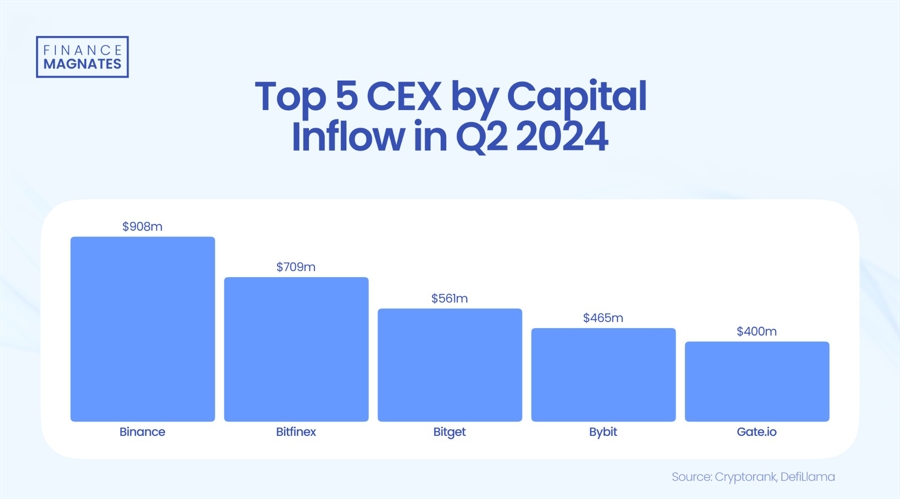
Although Bitget is not the largest cryptocurrency exchange in terms of total volumes, it closed a favorable quarter. From April to June, the platform ranked third in net capital inflows and showed the strongest growth in market share compared to its competitors.
In the second quarter, investors moved $700 million into Bitget, and activity on the platform increased by nearly 50%.
The exchange has seen a surge in user funds, with Bitcoin (BTC), Tether (USDT), and Ethereum (ETH) rising 73%, 80%, and 153%, respectively, in the first six months of the year. This growth coincided with adding 2.9 million new users to the platform.
This has positioned Bitget among the top exchanges with the highest positive net inflows in the last quarter. Only Binance, which remains the market leader, and Bitfinex have performed better in this category.
According to CCData’s latest H2 Outlook Report, the exchange also recorded the highest market share growth among centralized exchanges, increasing 38.4% from H2 2023 to H1 2024.
Bitget’s spot trading volume has also seen a visible increase, going from $28 billion in Q1 to $32 billion in Q2, marking an increase of over 10%. The platform’s monthly visitors have reached 10 million. Although its volumes are increasing, Bitget still does not rank among the top 10 cryptocurrency exchanges in terms of spot trading.
The changes taking place in the centralized cryptocurrency exchange market show that competition is becoming more and more intenseAn example of this is the recent surge in popularity of Bybit, which has become the second largest exchange in terms of spot trading volumes.
Sports Sponsorships and New Products
Gracy Chen, Source: LinkedIn
Gracy Chen, CEO of Bitget, commented on the quarterly performance, saying, “Q2 2024 was a pivotal period for Bitget. Our collaboration with Turkish athletes, along with significant growth in users and website traffic, is part of our global expansion.”
In an effort to expand its global presence, Bitget has partnered with three Turkish national athletes as part of its #MakeItCount campaign, starring Lionel Messi. The deal with the famous footballer It was signed in Februaryto build brand presence in Latin America.
The exchange also launched a $20 million TON Ecosystem Fund in partnership with Foresight Ventures to support early-stage projects on The Open Network.
The exchange introduced two new initial token listing products, PoolX and Pre-market, which collectively launched over 100 projects. Additionally, Bitget’s native token, BGB, was recognized as the best-performing centralized exchange token in June and was ranked among the top 10 cryptocurrencies by Forbes.
In its latest move, the cryptocurrency exchange aimed to become a regulated player in IndiaThe announcement comes as the world’s most populous democracy grapples with the complexities of integrating cryptocurrencies into its financial ecosystem.
Even recently,
Bitget Wallet Announced a joint investment with cryptocurrency investment firm Foresight X in Tomarket, a decentralized trading platform. This initiative targets emerging asset classes and aims to expand the portfolio’s services beyond traditional decentralized exchanges (DEXs).
Although Bitget is not the largest cryptocurrency exchange in terms of total volumes, it closed a favorable quarter. From April to June, the platform ranked third in net capital inflows and showed the strongest growth in market share compared to its competitors.
In the second quarter, investors moved $700 million into Bitget, and activity on the platform increased by nearly 50%.
The exchange has seen a surge in user funds, with Bitcoin (BTC), Tether (USDT), and Ethereum (ETH) rising 73%, 80%, and 153%, respectively, in the first six months of the year. This growth coincided with adding 2.9 million new users to the platform.
This has positioned Bitget among the top exchanges with the highest positive net inflows in the last quarter. Only Binance, which remains the market leader, and Bitfinex have performed better in this category.
According to CCData’s latest H2 Outlook Report, the exchange also recorded the highest market share growth among centralized exchanges, increasing 38.4% from H2 2023 to H1 2024.
Bitget’s spot trading volume has also seen a visible increase, going from $28 billion in Q1 to $32 billion in Q2, marking an increase of over 10%. The platform’s monthly visitors have reached 10 million. Although its volumes are increasing, Bitget still does not rank among the top 10 cryptocurrency exchanges in terms of spot trading.
The changes taking place in the centralized cryptocurrency exchange market show that competition is becoming increasingly intenseAn example of this is the recent surge in popularity of Bybit, which has become the second largest exchange in terms of spot trading volumes.
Sports Sponsorships and New Products
Gracy Chen, Source: LinkedIn
Gracy Chen, CEO of Bitget, commented on the quarterly performance, saying, “Q2 2024 was a pivotal period for Bitget. Our collaboration with Turkish athletes, along with significant growth in users and website traffic, is part of our global expansion.”
In an effort to expand its global presence, Bitget has partnered with three Turkish national athletes as part of its #MakeItCount campaign, starring Lionel Messi. The deal with the famous footballer It was signed in Februaryto build brand presence in Latin America.
The exchange also launched a $20 million TON Ecosystem Fund in partnership with Foresight Ventures to support early-stage projects on The Open Network.
The exchange introduced two new initial token listing products, PoolX and Pre-market, which collectively launched over 100 projects. Additionally, Bitget’s native token, BGB, was recognized as the best-performing centralized exchange token in June and was ranked among the top 10 cryptocurrencies by Forbes.
In its latest move, the cryptocurrency exchange aimed to become a regulated player in IndiaThe announcement comes as the world’s most populous democracy grapples with the complexities of integrating cryptocurrencies into its financial ecosystem.
Even recently,
Bitget Wallet Announced a joint investment with cryptocurrency investment firm Foresight X in Tomarket, a decentralized trading platform. This initiative targets emerging asset classes and aims to expand the portfolio’s services beyond traditional decentralized exchanges (DEXs).
-

 DeFi12 months ago
DeFi12 months agoDeFi Technologies Appoints Andrew Forson to Board of Directors
-

 Fintech12 months ago
Fintech12 months agoUS Agencies Request Information on Bank-Fintech Dealings
-

 News1 year ago
News1 year agoBlock Investors Need More to Assess Crypto Unit’s Earnings Potential, Analysts Say — TradingView News
-

 DeFi12 months ago
DeFi12 months agoSwitchboard Revolutionizes DeFi with New Oracle Aggregator
-

 DeFi12 months ago
DeFi12 months agoIs Zypto Wallet a Reliable Choice for DeFi Users?
-
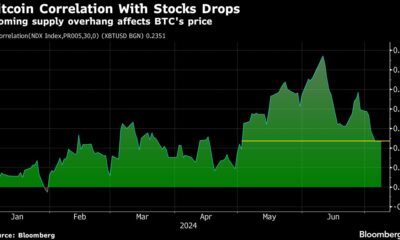
 News1 year ago
News1 year agoBitcoin and Technology Correlation Collapses Due to Excess Supply
-

 Fintech12 months ago
Fintech12 months agoWhat changes in financial regulation have impacted the development of financial technology?
-

 Fintech12 months ago
Fintech12 months agoScottish financial technology firm Aveni secures £11m to expand AI offering
-

 Fintech12 months ago
Fintech12 months agoScottish financial technology firm Aveni raises £11m to develop custom AI model for financial services
-

 News1 year ago
News1 year agoValueZone launches new tools to maximize earnings during the ongoing crypto summer
-

 Videos6 months ago
Videos6 months ago“Artificial intelligence is bringing us to a future that we may not survive” – Sco to Whitney Webb’s Waorting!
-

 DeFi1 year ago
DeFi1 year agoTON Network Surpasses $200M TVL, Boosted by Open League and DeFi Growth ⋆ ZyCrypto

